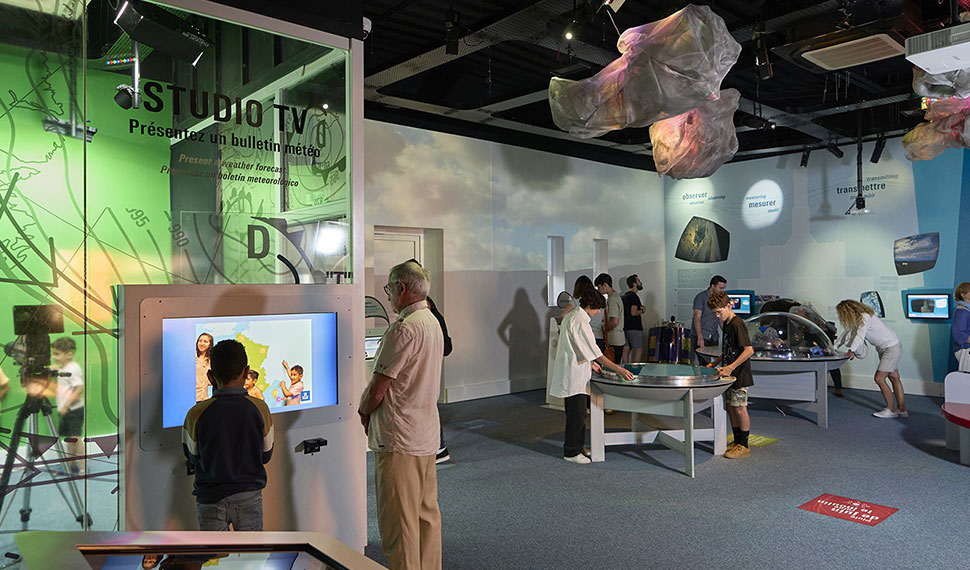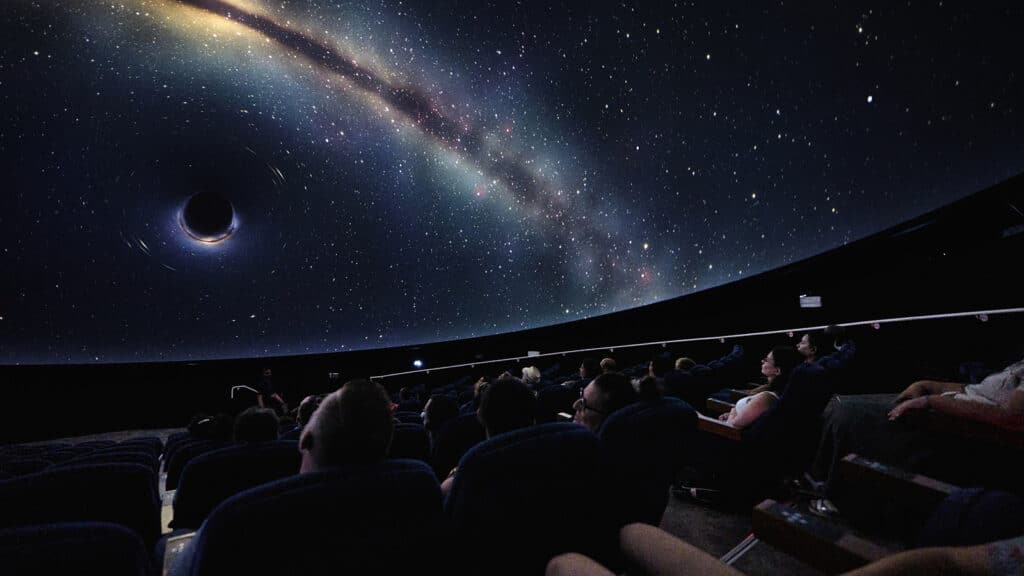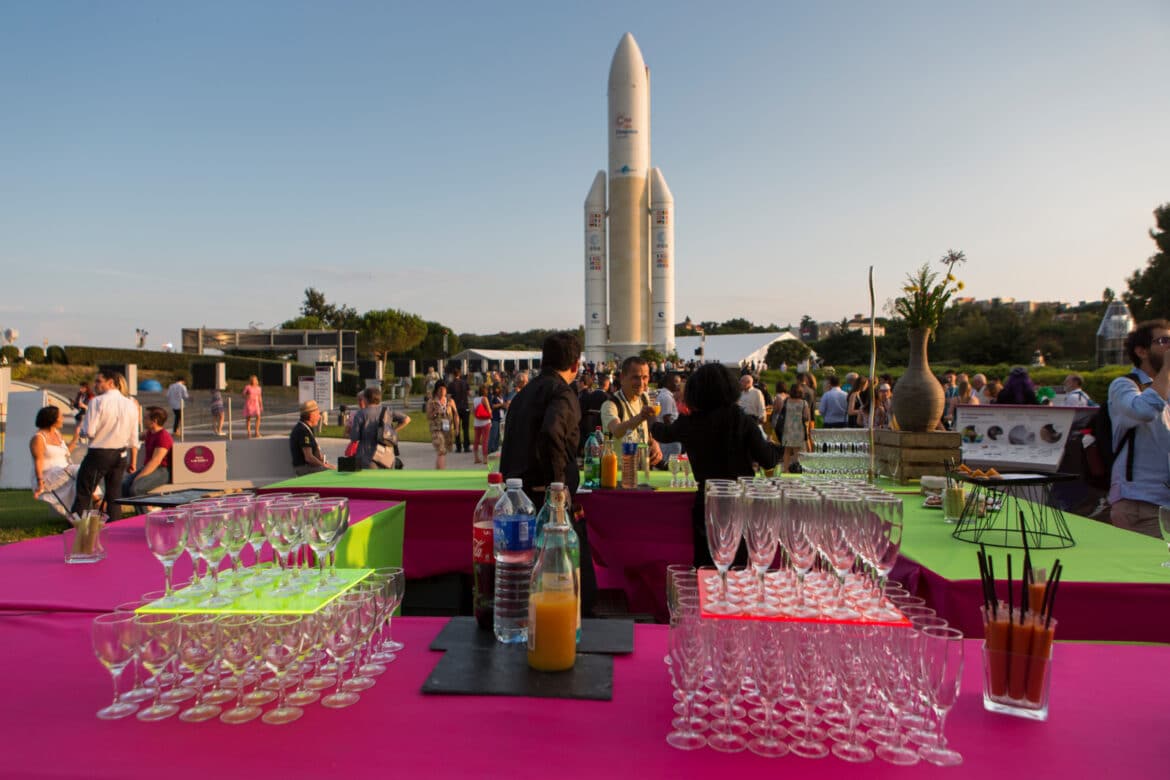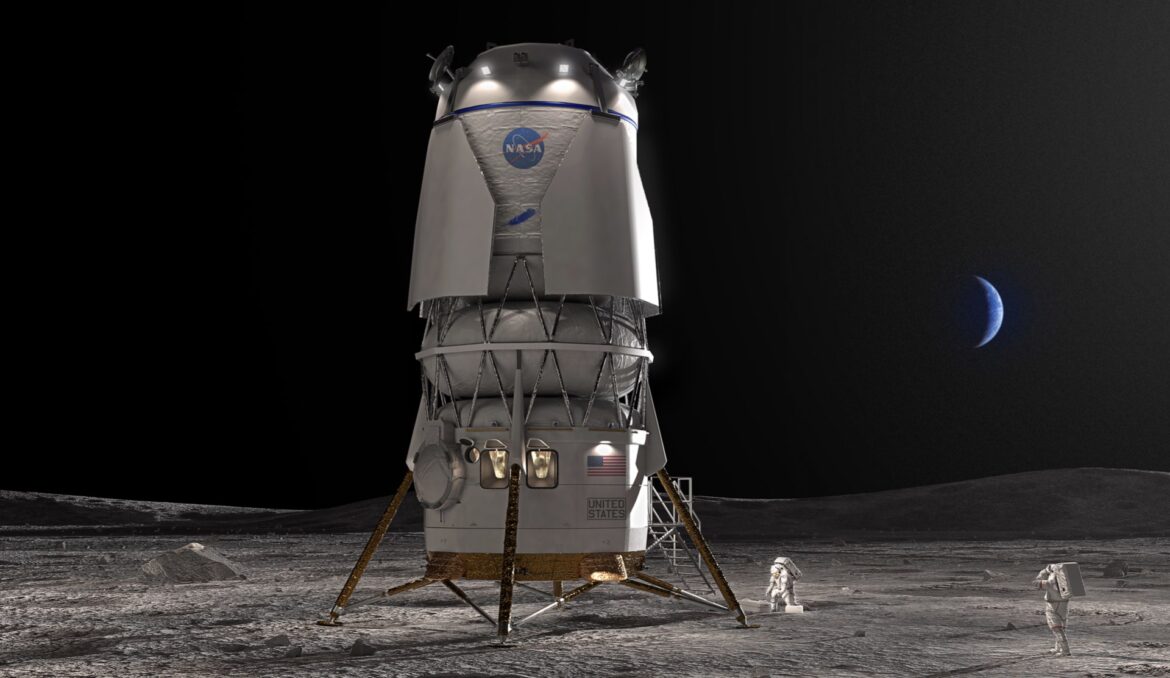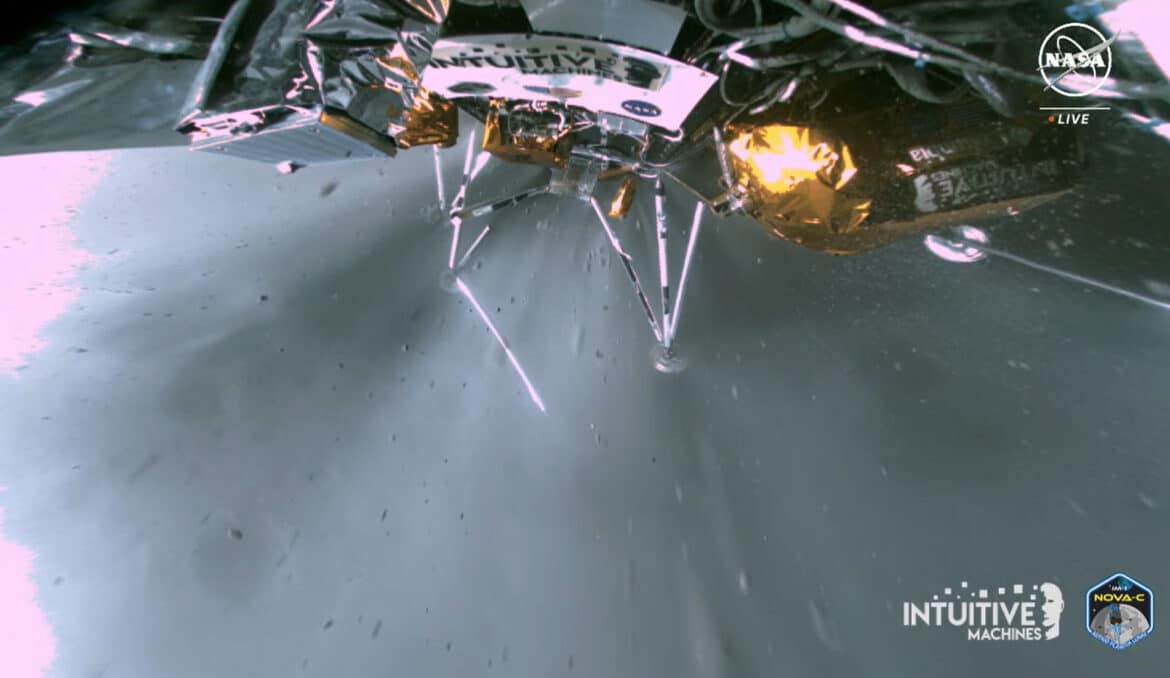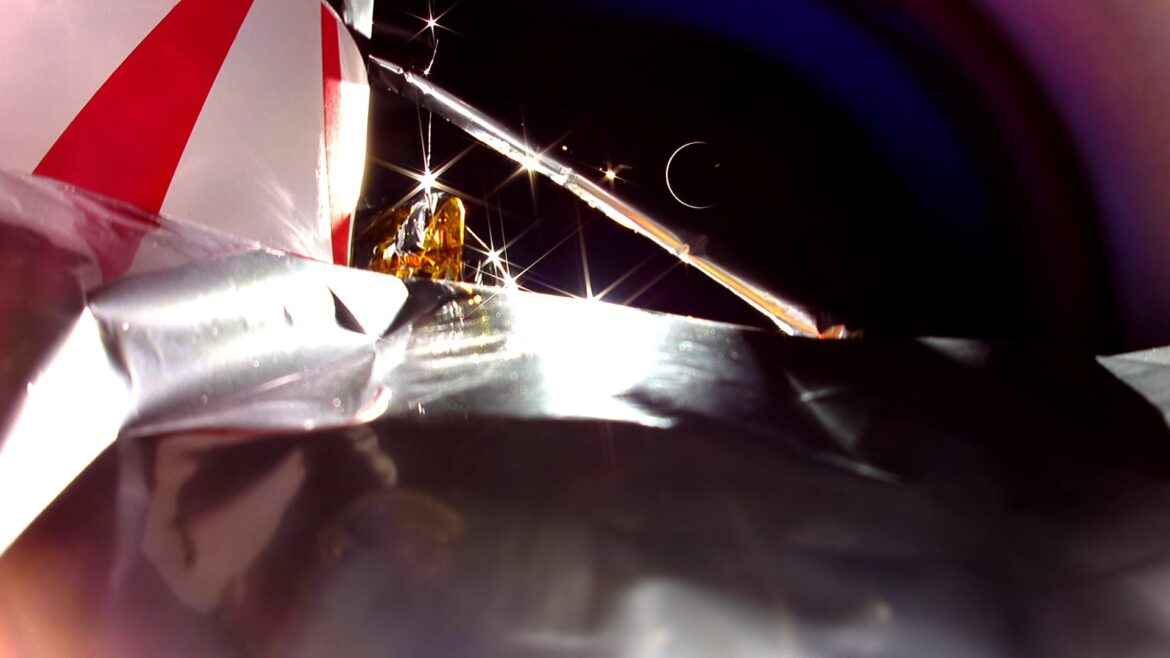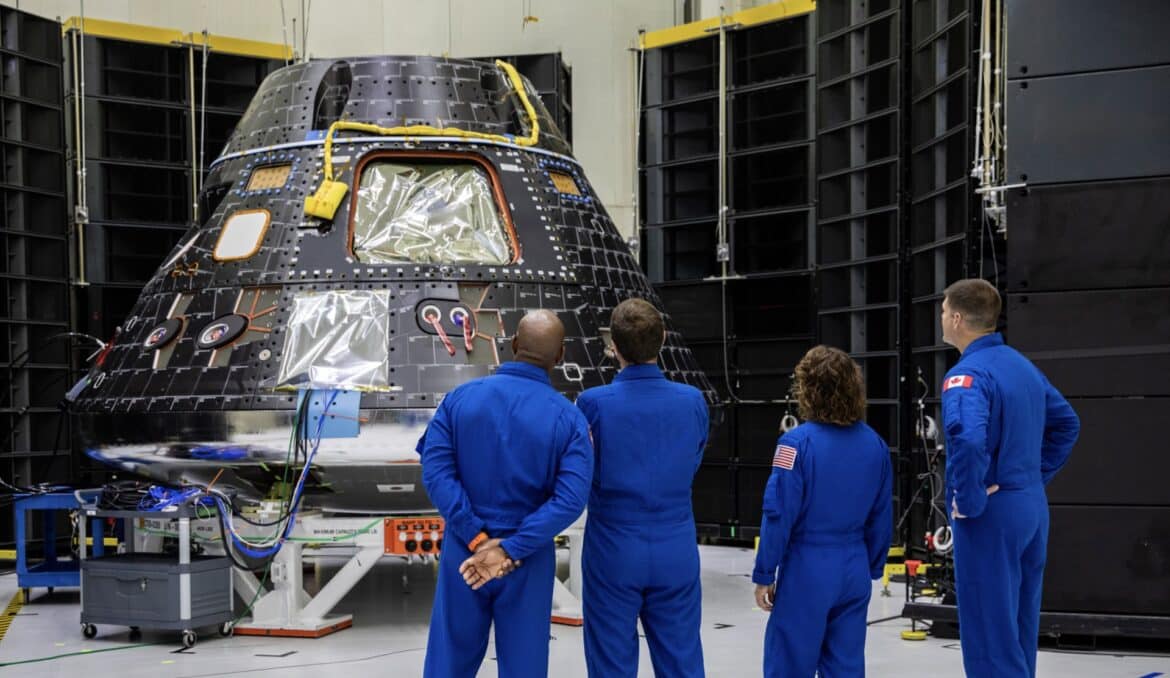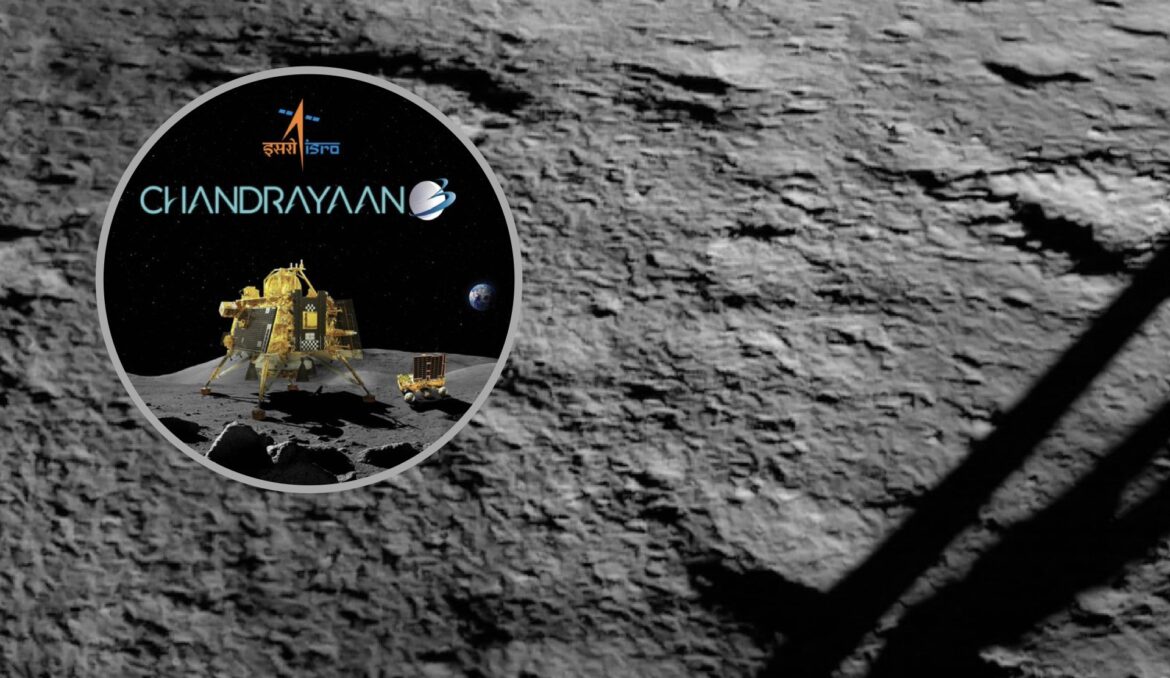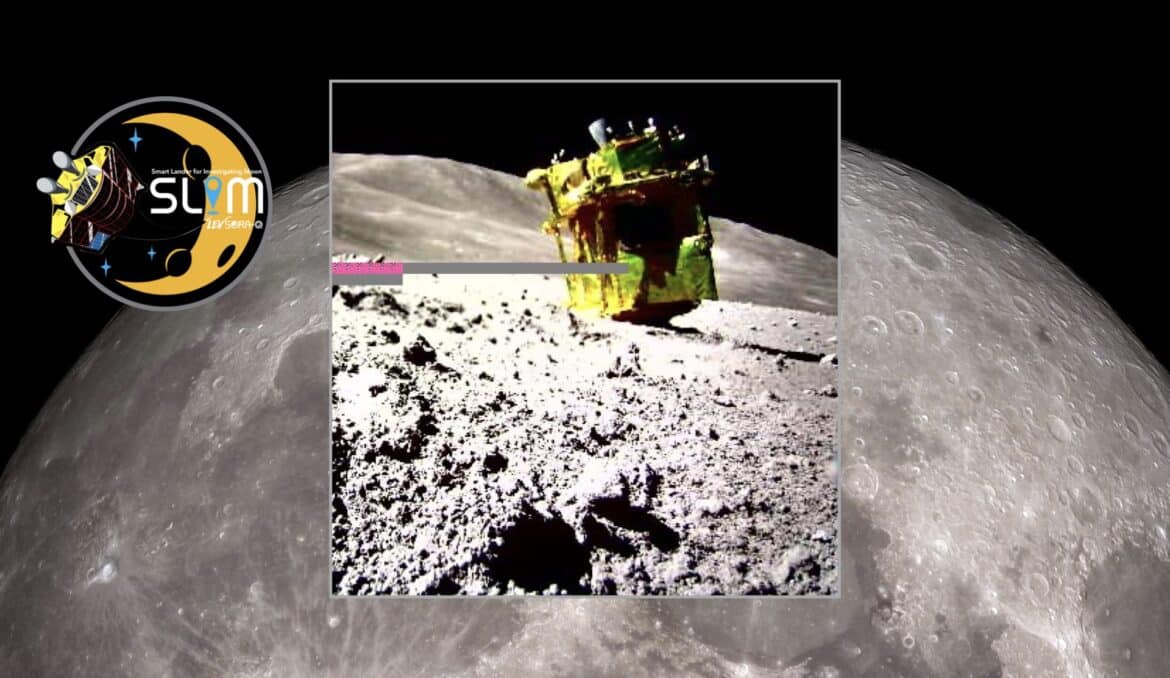

At NASA Headquarters in Washington DC, NASA Administrator Bill Nelson (left) announces that Blue Origin will supply the second Artemis HLS. In the background, the logo of the company can be seen.
© NASA/Aubrey Gemignani
Another Lunar Lander
In 2021, NASA selected SpaceX for the craft responsible for taking astronauts to the surface of Selene. The private firm founded by Elon Musk has offered a special version of its imposing Starship (which recently had a test flight). Let us recall here that the device called HLS by the American agency (Human Landing System) is not intended to accomplish the entirety of an Artemis mission. Astronauts depart for the Moon aboard the Orion capsule atop the SLS. In lunar orbit, the crew passes (directly, or via the Gateway if it is then operational) to the HLS responsible for the journey to the surface of our natural satellite. Then the same HLS leaves the Moon to meet the Gateway or Orion. It is this capsule that takes care of the return to Earth. On May 19 2023, NASA officially announced that it had selected Blue Moon as the second lunar lander for Artemis. Blue Moon is provided by the Blue Origin company, founded by billionaire Jeff Bezos.
